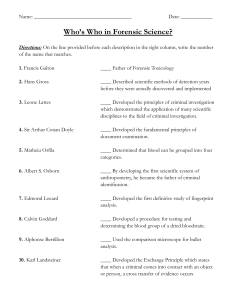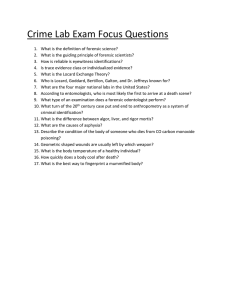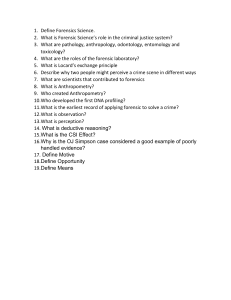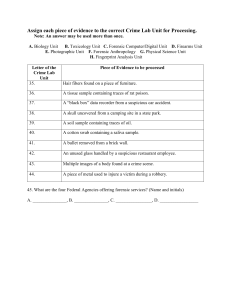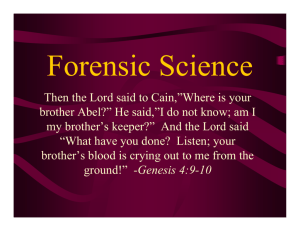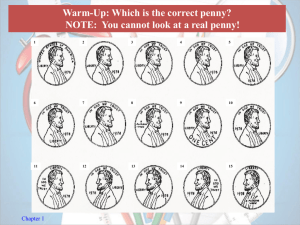History of Forensic Science Presentation
advertisement
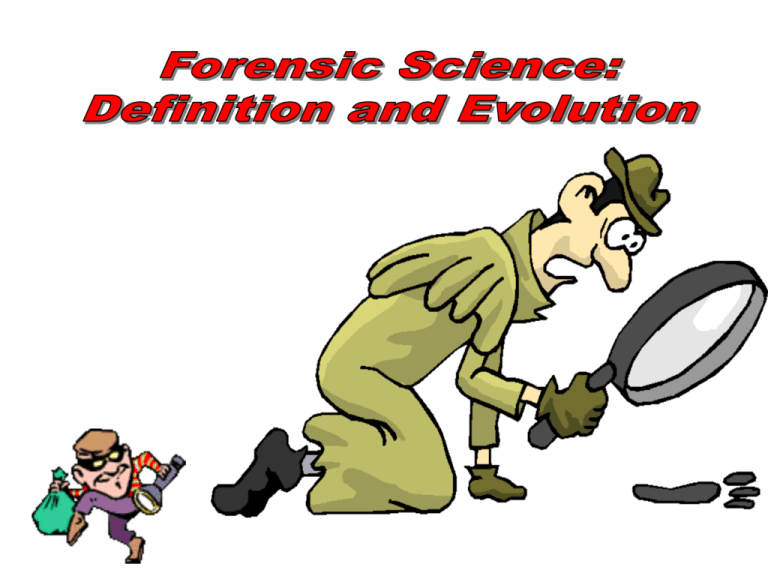
The application of science to criminal and civil laws that are enforced by police agencies in a criminal justice system. Forensic Science relies on the scientist’s ability to supply accurate and objective information that reflects the events that have occurred at a crime - Writer of the works centered around Sherlock Holmes. - Utilized the principles of serology, fingerprinting, firearm identification, document examination long before their value was recognized by real-life investigators. Alphonse Bertillion (1853-1914) Developed the first scientific system of personal identification known as Anthropometry A systematic procedure of taking a series of body measurements as a means of distinguishing individuals. Information Sheet Will West William West Francis Galton (1822-1911) Did the first definitive study of fingerprints. Dr. Karl Landsteiner (1868-1943) In the early 1900’s he discovered that human blood can be grouped into different categories of A, AB, B, and O. Leone Lattes (1817-1954) Developed a procedure for determining the blood group of a dried blood stain. This method is still used today. Calvin Goddard (1891-1955) Utilized the comparison microscope to analyze bullets Albert S. Osborn (1858-1946) Developed the fundamental principles of document examination Edmond Locard (1877-1966) Developed the first police crime lab in Lyons, France. Also developed: Locard’s Exchange Principle States: When a criminal comes in contact with an object or person, a cross-transfer of evidence occurs. August Vollmer (1876-1955) Set up the oldest forensic lab in the U.S. with the Los Angles Police Department in the mid 1920’s In the 1930’s, the FBI organized a national lab that offered forensic services to all law enforcement agencies. 1972 – The California Dept. of Justice established a network of state-operated crime labs which became a model system of integrated forensic labs consisting of regional and satellite facilities.
